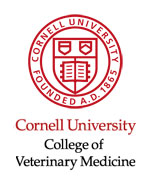"Virus Topotypes and the Role of Wildlife
in Foot and Mouth Disease in Africa"
Wilna Vosloo, A. D. S. Bastos, M. Sahle, O. Sangare and R.
M. Dwarka
The epidemiology of foot and mouth disease (FMD) on the
African continent is influenced by two different patterns,
viz. a cycle where wildlife plays a role in maintaining and
spreading the disease to other susceptible domestic animals
and wild ungulates and another that is maintained within
domestic animals. In southern Africa the former cycle predominates
due to the presence of African buffalo (Syncerus caffer),
the only wildlife species for which long term maintenance
of FMD has been described. In East Africa both cycles probably
occur, while in West Africa, due to the absence of sufficient
numbers of wildlife hosts, the disease is maintained largely
in the domestic cycle.
Foot and mouth disease is endemic to most countries in sub-Saharan
Africa, except in southern Africa, where a number of countries
have been able to control FMD by separating infected buffalo
and other wildlife species from livestock using fences. Vaccination
is used on a limited scale in domestic animals in close proximity
of the potential infectious hosts. In other parts of the
sub-continent control of FMD is surpassed by more urgent
needs such as poverty and famine. However, FMD is one of
the diseases that needs to be controlled should countries
want to access international agricultural export markets.
FMD cannot be eradicated from Africa unless all infected
buffalo are removed, which from an ecological and ethical
point of view would be untenable.
A better understanding of the epidemiology of the disease
could aid in planning control strategies. The use of molecular
epidemiological studies has assisted greatly in this regard
by highlighting historical and current patterns of spread
across borders and demonstrating the presence of viral topotypes
that occur in both cycles of spread. Geographical clustering
of virus strains into topotypes has been demonstrated for
all 6 serotypes occurring on the continent and genetic variation
is such that topotype distribution should be heeded when
vaccination for control of FMD is considered.
|
|










